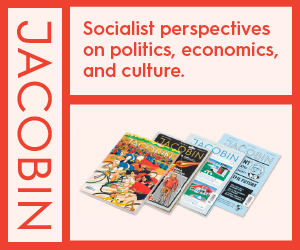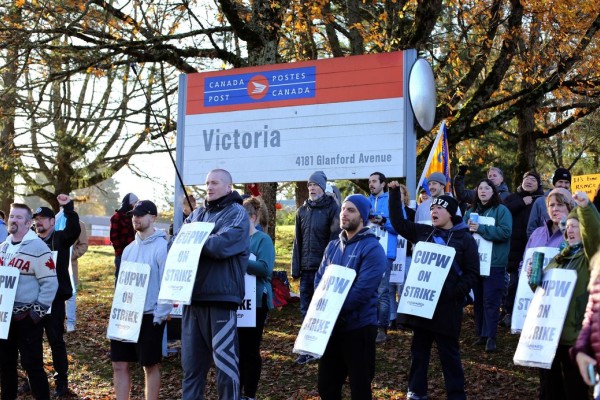Attacking the substance: A review of Young, Banerjee, and Schwartz’s ‘Levers of Power’
Electoralism and mass protest are not mutually exclusive—progressives need to be active across all fields of struggle
In their new book Levers of Power: How the 1% Rules and What the 99% Can Do About It, Kevin Young, Tarun Banerjee and Michael Schwartz offer some counterintuitive advice to activists looking to make political change. Activist energies, they suggest, are best spent focusing not on the elected officials who pass laws and make public policy, but instead on “the few big interests” that actually shape policy in the first place: namely, the corporations that dominate the economy.
While the book offers a rich and thought-provoking illustration of corporate political power, its strategic advice to activists needs to be scrutinized.
To get things started, it is helpful to lay out their theory of political power. The book opens with a quote from the American philosopher John Dewey that encapsulates their argument. Politics, Dewey lamented, “is the shadow cast on society by big business.” Few would doubt Dewey’s point that big business has too much sway over politics, but Dewey added a warning that oftentimes appears forgotten: “The attenuation of the shadow will not change the substance.” In other words, electing a different set of politicians, even those critical of the status quo, will not loosen the grip of big business over society.
Here is where Young, Banerjee and Schwartz’s book differs from most critical accounts of business power in the neoliberal era, which is usually attributed to some combination of campaign financing, backdoor lobbying or the “revolving door” between corporations and the state. For these authors, the real source of business power isn’t money in politics—it’s the very structure of the economy itself.
In capitalist societies, the business sector largely controls the resources the rest of us depend on for our well-being. In many cases, the private sector (not government) makes the important decisions about how those resources will be used, with major consequences in terms of jobs, incomes, health, culture, the environment and everything else in between. For that reason, business’ most potent weapon is not its ability to buy compliant politicians, but its ability to wage a “capital strike,” that is, to withdraw investment until it gets what it wants. No government, not even a socialist one, can ignore this threat, for the inevitable outcome of a capital strike is economic chaos.
As a result, the thrust of government policymaking in capitalist societies is to convince business to invest anew. Governments are thus tightly constricted when it comes to taking measures that could undermine business profits. Want an affordable, universal prescription drug care program? You will have to deal with “Big Pharma” who may shut off supplies of medicines rather than concede control over prices. Real action on climate change? Just think of the pain the fossil fuel giants could unleash on us. The capital strike is such a potent weapon that, as former United States Vice President Al Gore put it, “it’s virtually impossible … to enact any significant change without first seeking and gaining permission from the largest commercial interests who are most affected by the proposed change.”
How, then, can progressive forces hope to win? In a nutshell: with mass, disruptive action that targets the real decision makers behind the scenes. To be effective, movements have to focus their campaigns on the corporate sector directly. Movements’ greatest leverage is their ability to disrupt “business as usual,” to change the decision-making calculus of vulnerable elite actors, who, faced with threats to their privilege and profits, will decide that granting concessions is better than carrying on as before. This is the key: movements can’t make elected officials change their minds. They have to change the minds of the economic elite, who, in turn, will pressure politicians to grant concessions. Wedging splits among the one percent is thus critical to movement success.
Levers of Power illustrates this dynamic by examining several episodes of major reform. Here, I will focus on one: employers’ grudging acceptance of the Wagner Act, the US law that granted workers the right to form unions and bargain collectively. While most accounts centre liberal politicians and pro-union Supreme Court rulings, Levers of Power emphasizes worker-led struggles on the shop floor.
Initially, the government had no power to enforce the Act, so corporate intransigence to demands for union recognition continued well after the law had come into force. But as unions engaged in a mass strike wave between 1935-1937, the corporate sector changed its tune: businesses even started inviting the newfound National Labor Relations Board (NLRB) to their workplaces to oversee union elections.
In this account, the traditionally anti-union auto sector played a pivotal role. The sit-down strikes at General Motors plants in 1936-37 finally forced the company to recognize the United Auto Workers (UAW), but what happened in the years thereafter was even more important.
The UAW was split into two factions, with militants lining up behind the Congress of Industrial Organizations, moderates within the American Federation of Labour. Hoping to win worker allegiances, the two factions engaged in alternating work stoppages, making ever more radical demands against the company. The strikes took a huge chunk of GM’s profits, and threatened the labour peace the company thought it had won by granting recognition.
At that point, far from resisting NLRB intervention in its plants, GM demanded it, requesting the NLRB establish exclusive bargaining rights for one of the two factions. Faced with such a dire threat to its economic interests, GM chose the lesser of two evils, conceding government intervention rather than facing the possibility of lasting labour strife. Other corporations followed in GM’s path, and the Wagner Act became an accepted part of the industrial landscape. The point is clear: Mass disruption directed not against politicians, but against big business secured the movement victory.
But as compelling as the case for mass disruption may be, the book nevertheless downplays the role that politicians play in advancing—or stifling—movement demands. And just as importantly, the strategy amounts to conceding the electoral arena to the left’s opponents.
Consider again the GM case. The history of labour relations in the United States is replete with violence, with countless stories of state repression directed against striking workers. State violence was one of American capital’s most potent weapons in its battle against workers. But, famously, in 1936-37, the liberal Michigan Governor Frank Murphy refused to order the National Guard to use force against the sit-down strikers, or carry out the eviction order against them. With state violence off the table, surely GM had to reassess its options.
Compare the outcome of the GM sit-down to another one, where local politicians strongly opposed unionization: the 1937 strike at the Holmes Foundry in Sarnia, Ontario. Ontario Premier Mitch Hepburn was notorious for his hostility towards the “communist” CIO and had no qualms about using violence to break it. The Holmes sit down ended when “an armed mob of local goons” broke into the plant and beat the mostly immigrant strikers. The union drive was crushed.
Notably, Canada did not pass its own “Wagner” style reforms until 1944, when the federal government—fearing the growing electoral popularity of the socialist Cooperative Commonwealth Federation (CCF)—enacted an order in council to undercut the party’s appeal.
Relatedly, neither the recent disruption unleashed by the Black Lives Matter protests, nor corporate America’s growing support for racial justice (if purely symbolic) has swayed the Trump administration into conceding anything. In fact, Trump has doubled down on his racist rhetoric, emboldening police and far-right forces to take violent action against “antifa” protestors.
At the very least, while who holds state power at any given moment may not determine the outcome of movement mobilizations, it is no doubt an important conditioning factor.
Another concern is that Levers of Power paints elected governments as powerless against the capital strike: once declared, governments have no choice but to give in to business demands. But surely this is overstated.
Consider perhaps the greatest difference in the character of the Canadian and American social welfare policy regimes and one of the central focuses of the book: the provision of health care services. In Canada, the government provides universal health care to all residents, free at the point of care. In the US, by contrast, health care remains profit driven, with differing levels of service available to residents according to their ability to pay. Yet, it would be hard to say that Canada’s more generous universal health care system is the result of our country’s greater tendency to engage in mass, disruptive action.
In fact, it is the product of our different party system. In passing North America’s first universal health care program in 1961, Saskatchewan’s Co-operative Commonwealth Federation government hardly took its cues from elites: it overcame a capital strike.
To protest the government incursion into their private practices, Saskatchewan’s doctors waged a two-week strike against the government, refusing to serve patients. But rather than giving in to the doctor’s demands, the CCF government brought in doctors from elsewhere. Eventually, the provincial doctors relented, and the government’s universal health care program went ahead as originally planned.
The point is, governments can overcome capital strikes—if they want to. In fact, the simple reality for progressive forces is that if we want to accomplish anything, we have no choice. As Michael Lebowitz once put it, “nothing is more naive than to assume that you can undertake certain measures of economic policy without a response from capital; nothing is more certain to backfire than introducing measures that serve people’s needs without anticipating capital’s response.”
Once we understand this point, Lebowitz suggests, capital strikes are no longer a crisis, but an opportunity: “When capital goes on strike, there are two choices, give in or move in.” Giving in means giving capital what it wants. Moving in means taking capital away from capital, putting it under public control and using it to serve social, rather than private, ends.
Here are the limits of Young, Banerjee and Schwartz’s strategy. By conceding the electoral realm to our opponents, reform can only go as far as the “powers that be” will let it. If the strategy of movements hinges on getting corporations to force concessions from politicians, the reforms will ultimately serve corporate, not public, interests.
This is not to say that mass, disruptive action is not a useful tactic. Clearly, it is, but under the right conditions. Nor is the point to say we should vote for liberals and social democrats, a dead-end if ever there was one.
It is only to say that electoralism and mass protest need not be held as mutually exclusive. Without any illusions that building a mass movement is as simple as flipping a switch, progressives need to be active across all fields of struggle, including elections. Leaving the state, an apparatus of enormous power, to our opponents, does not bode well for progressive movements.
Matt Corbeil recently completed a PhD in politics at York University where he studied the political power of the Ontario mining industry.










